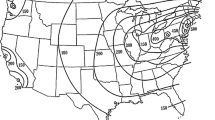Abstract
In this study we compare the traditional OLS approach applied to the log-linear form of the gravity model with the Poisson Quasi Maximum Likelihood (PQML) estimation procedure applied to the non-linear multiplicative specification of the gravity model. We use the trade flows for all products, for all manufacturing products as well as for manufacturing products broken down by three-digit ISIC Rev.2 categories. We base our conclusions on the gravity model of Bergstrand (Rev Econ Stat 71(1):143--153, 1989) for disaggregate trade flows that allows us to investigate differences in factor-proportions and home-market effects at the industry level. In addition, we compare the effects of other explanatory variables such as exporter and importer total income, distance, preferential trade agreements, common border, historical ties, and common language on the volume of trade. Our main conclusion is that both estimation results as well as results of the regression mis-specification tests provide supporting evidence for the PQML estimation approach over the OLS estimation method.
Similar content being viewed by others
References
Aitken ND (1973) The effect of EEC and EFTA on European trade: a temporal cross-section analysis. Am Econ Rev 63: 881–892
Anderson JE (1979) A theoretical foundation for the gravity equation. Am Econ Rev 69: 106–116
Anderson JE, van Wincoop E (2003) Gravity with gravitas: a solution to the border puzzle. Am Econ Rev 93(1): 170–192
Anderson JE, van Wincoop E (2004) Trade costs. J Econ Lit 42(3): 691–751
Bergstrand JH (1985) The gravity equation in international trade: some microeconomic foundations and empirical evidence. Rev Econ Stat 67: 474–481
Bergstrand JH (1989) The generalized gravity equation, monopolistic competition, and the factor proportions theory in international trade. Rev Econ Stat 71(1): 143–153
Davidson R, MacKinnon JG (1993) Estimation and inference in econometrics. Oxford University Press, Oxford
Deardorff AV (1982) The general validity of the Heckscher–Ohlin theorem. Am Econ Rev 72(4): 683–694
Feenstra RC, Markusen JA, Rose AK (2001) Using the gravity equation to differentiate among alternative theories of trade. Can J Econ 34(2): 430–442
Geraci VJ, Prewo W (1977) Bilateral trade flows and transport costs. Rev Econ Stat 59: 67–74
Goldberger A (1968) The interpretation and estimation of Cobb-Douglas functions. Econometrica 36(3–4): 464–472
Helpman E, Krugman P (1985) Market structure and foreign trade. MIT Press, Cambridge, MA
Linder SB (1961) An essay on trade and transformation. Wiley, New York
Linnemann H (1966) An econometric study of international trade flows. North-Holland, Amsterdam
Manning WG, Mullahy J (2001) Estimating log models: to transform or not to transform?. J Health Econ 20: 461–494
Park R (1966) Estimation with heteroskedastic error terms. Econometrica 34(4): 888
Peters S (2000) On the use of the RESET test in microeconometric models. Appl Econ Lett 7: 361–365
Poyhonen P (1963) A tentative model for the volume of trade between countries. Rev World Econ 90(1): 93–100
Ramsey JB (1969) Test for specification errors in classical linear least squares regression analysis. J R Stat Soc B 31: 350–371
Santos Silva JMC, Tenreyro S (2006) The log of gravity. Rev Econ Stat 88(4): 641–658
Sapir A (1981) Trade benefits under the EEC generalized system of preferences. Eur Econ Rev 15: 339–355
Sattinger M (1978) Trade flows and differences between countries. Atl Econ J 6: 22–29
Schumacher D, Siliverstovs B (2006) Home-market and factor-endowment effects in a gravity approach. Rev World Econ (Weltwirtschaftliches Archiv) 127(2): 330–353
Tinbergen J (1962) Shaping the world economy. Twentieth Century Fund, New York
Wooldridge JM (2002) Econometric analysis of cross-section and panel data. MIT Press, Cambridge, MA
Author information
Authors and Affiliations
Corresponding author
Additional information
The paper has benefited from comments by an anonymous referee and by the participants at the following conferences: the 4th Nordic Econometrics Meeting, Tartu, Estonia, the 8th Annual Conference of the European Trade Study Group (ETSG), Vienna, Austria, the 21th Annual Congress of the European Economic Association (EEA), Vienna, Austria, the XIth Spring Meeting of Young Economists (SMYE), Sevilla, Spain, and the 5th Annual Conference of the European Economics and Finance Society (EEFS), Heraklion, Greece.
Rights and permissions
About this article
Cite this article
Siliverstovs, B., Schumacher, D. Estimating gravity equations: to log or not to log?. Empir Econ 36, 645–669 (2009). https://doi.org/10.1007/s00181-008-0217-y
Received:
Accepted:
Published:
Issue Date:
DOI: https://doi.org/10.1007/s00181-008-0217-y




